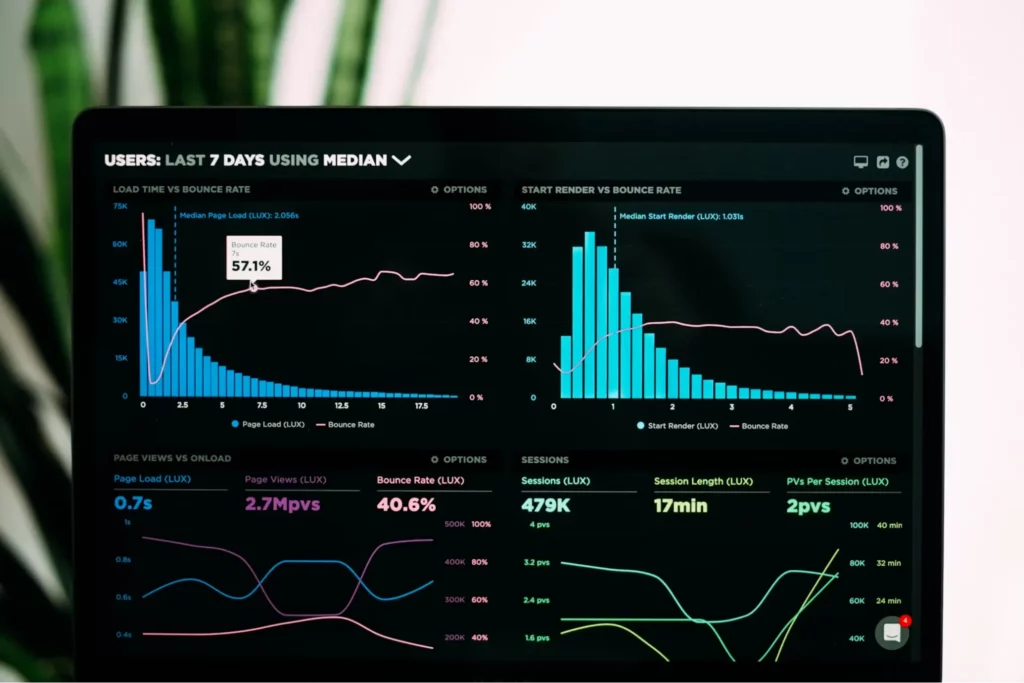What is Robotic Process Automation (RPA) and How Does It Work?
Table of Content
What is Robotic Process Automation(RPA)?
Robotic Process Automation, or RPA, is a cutting-edge technology revolutionizing how corporations manage routine activities. RPA solutions automate repetitive, rule-based tasks by simulating human interactions with digital systems. These Robotic Process Automation systems use “bots,” or software robots, to operate on data and applications and perform pre-programmed activities. Enhanced accuracy, cost savings, and efficiency are some of the benefits of RPA.
Robotic Process Automation (RPA) technologies enable businesses to automate processes without changing their infrastructure. Unlike traditional automation, RPA solutions operate at the user interface level, making adoption faster and less expensive. Robotic Process Automation technologies speed up workflows and reduce human error associated with manual tasks by acting as a digital workforce.

How Does RPA Work?
Software robots can be used by organizations to automate repetitive processes through the use of Robotic Process Automation, or RPA. New software robots must be evaluated, configured, and deployed as part of the RPA process. We’ll look at an overview of RPA solutions and the several varieties you may come across, albeit some parts will vary depending on the platform of choice.
Programmable Bots Make Tedious Tasks Easier
Coding is not necessary to understand how Robotic Process Automation functions. Because of this, it is simpler for a company to hire or educate RPA engineers, and knowledge gained from one platform often transfers to other RPA solutions. An experienced engineer may easily design an automated workflow thanks to the drag-and-drop interface and support for almost any type of task. There are numerous configurable settings available for each command and rule option in Robotic Process Automation solutions to tailor it to your needs. Automation and all of its benefits of RPA are activated when you establish the process with extremely explicit rules.
Intelligent Bots Handle More Tasks
Although RPA is a helpful tool, there are certain limitations. Businesses can develop “intelligent” bots that are better equipped to handle complicated tasks, including exception possibilities, by combining Robotic Process Automation with cutting-edge AI capabilities. In the end, this improvement may result in increased end-to-end process automation, giving employees even more time to spare.
Front-End vs Back-End RPA
Often in real-time, attended RPA solutions collaborate with human equivalents to deliver the data an employee needs to finish their responsibilities. It’s the ideal option for jobs that your front-desk employees must complete, such as swiftly obtaining client data from several databases. Attended Robotic Process Automation frequently has fewer use cases and may just work on a single user’s or team’s workstation rather than across all business platforms. Employee stress levels are reduced, and customer service is enhanced as a result.
The same degree of supervision or cooperation with the software’s human equivalents is not necessary for unattended RPA solutions. These Robotic Process Automation solutions automate back-end activities that don’t need human participation, but they do so on a much greater scale. These RPA bots all follow rules to carry out a task from beginning to end; you can set them up to run on a schedule or in response to particular system events.
Industrial Use Cases of Robotic Process Automation (RPA)

Patient Scheduling in Healthcare
RPA solutions help healthcare providers by automating patient scheduling, which lowers administrative costs and enhances patient satisfaction. Robotic Process Automation bots may effectively handle appointments, update real-time schedules, and give patients automatic reminders by integrating with electronic health data. By reducing no-shows and scheduling problems, this optimization frees up healthcare workers to spend more time caring for patients, therefore improving overall service quality.
Employee Onboarding in Human Resources
HR organizations can streamline employee onboarding by using Robotic Process Automation (RPA) to automate administrative processes including form filling, account setup, and communication management. By eliminating errors and delays in the process, this automation guarantees new hires a seamless and uniform onboarding experience. RPA solutions help HR professionals focus on more strategic aspects of employee development and talent management by relieving them of repetitive activities. This leads to a more engaged and productive workforce.

Claims Processing in Insurance
RPA solutions are used by the insurance sector to automate everything from data extraction to payment disbursement, thereby streamlining the claims processing process. The claims process is greatly accelerated by this Robotic Process Automation, which also improves payout accuracy and speeds up processing times. Insurance businesses may increase client satisfaction and foster confidence by reducing human error and speeding up claim resolutions.
Order Processing in Retail
Robotic Process Automation automates every step of the retail order processing process, from data entry to shipping coordination. Without requiring human input, this smooth automation gathers order information, checks inventory, handles payments, and starts the delivery process. Retail establishments are thus able to handle orders more precisely and swiftly, which lowers mistakes and delays.
Credit Scoring in Financial Services
Robotic Process Automation automates data gathering and analysis, revolutionizing credit scoring in the finance industry. Because of the streamlined procedure, credit assessments are more accurate because processing times are shortened and human error is reduced. Financial firms are therefore able to provide quicker loan approvals, improving client satisfaction and operational effectiveness.
Benefits of Robotic Process Automation (RPA)

Accuracy
Data input and form filling are two jobs where Robotic Process Automation shines since they are prone to human error. RPA solutions run with 100% error-free precision by automating these procedures, guaranteeing output consistency and quality. Businesses can select between attended and unattended RPA; the latter enables human supervision in situations involving sensitive data or customer-facing tasks. Enhanced precision yields superior outcomes and heightened dependability in operational procedures.
Customer Satisfaction
By providing customers with better-quality goods and services and quicker answers to their questions, Robotic Process Automation helps to increase consumer happiness. RPA solutions help businesses deliver a better overall customer experience by reducing errors and expediting procedures. Customers are more likely to remain loyal to the company and to promote it to others as a result of this improved level of service.
Productivity
Administrative chores that would take days or weeks for human personnel to complete can be completed in hours or minutes using RPA solutions. The organization as a whole experiences far improved production as a result of this remarkable speed boost. As an employee’s digital coworker, Robotic Process Automation helps them do tasks more rapidly and effectively. As a result, productivity increases for both individual workers and the company as a whole.
Resource Allocation
Organizations can more efficiently utilize their human and financial resources thanks to Robotic Process Automation. Businesses can reroute their workers to more strategic, value-added duties by automating typical business procedures. Faster delivery and increased operational efficiency are further benefits of RPA’s capacity to manage a higher volume of work in less time. Organizations may maximize their potential and get superior overall results with this efficient resource distribution.
Scalability
Robotic Process Automation implementation fosters corporate growth by boosting task capacity and enhancing output quality, both of which frequently result in more demand. Organizations can scale their business processes across whole workflows by adhering to best practices for RPA installation. Because of its scalability, which links departments, systems, and individuals, firms may expand operations and manage heavier workloads with greater efficiency using RPA solutions.

Analytics
Organizations can obtain precise data from several sources thanks to Robotic Process Automation, which enhances their analytical capabilities. Businesses can obtain real-time insights into their automated processes when they combine intelligent automation with it, guaranteeing optimal performance and alignment with strategic goals. Work volume, errors, cycle times, and exceptions are just a few of the insights that RPA-generated data may use to measure and optimize processes continuously throughout the entire company.
Communication
Employee communications are made easier by RPA solutions, which automate manual updates and tracking procedures. By ensuring that corporate processes are completed promptly and precisely, this automation raises the standard of communication efficiency. Additionally, Robotic Process Automation makes it easier to gather and combine data from many systems, producing insightful information that improves decision-making and process integration throughout the company.

Security
RPA solutions decrease the amount of human personnel who handle sensitive data, improving cybersecurity and data privacy. Businesses can maintain a greater level of security because of the less human participation in preventing data leaks and breaches. By executing prompted account logouts and putting two-factor authentication into place, Robotic Process Automation may also help protect against illegal access, enhancing an organization’s overall security posture.
Cost Savings
Robotic Process Automation implementation helps businesses save a lot of money. Unlike human equivalents, RPA solutions do repetitive jobs more effectively and with fewer errors, working nonstop around the clock. This decrease in errors shortens the time to value and reduces expensive rework. Companies can maximize their existing resources. Staff members can focus more time on high-quality work that improves the business’s bottom line.
Summary
Robotic Process Automation (RPA) is revolutionizing how businesses handle repetitive tasks. By mimicking human interactions with digital systems, RPA software bots can automate routine, rule-based processes across various applications. RPA offers significant benefits to businesses. These include increased efficiency, improved accuracy, cost savings, and allowing employees to focus on strategic work. RPA’s versatility makes it valuable across various industries, from finance to healthcare. It enables organizations to streamline operations and boost productivity without major IT infrastructure changes.
Robylon AI takes RPA to the next level by offering an intuitive, no-code platform for creating and deploying automation solutions. With Robylon’s user-friendly interface, businesses can quickly set up RPA bots by simply recording workflows once and running them seamlessly thereafter. The platform integrates advanced features like generative AI, enhancing the intelligence and capabilities of automation. Robylon AI also provides powerful scheduling tools, extensive integrations, and actionable insights to maximize the impact of RPA across your organization.
Sounds Interesting? Book a demo now!
FAQs
What is Robotic Process Automation (RPA)?
Robotic Process Automation is a technology that uses software robots to automate repetitive, rule-based tasks by mimicking human interactions with digital systems.
How does RPA differ from traditional automation?
RPA operates on the front end of existing systems without altering them, making it quicker and less expensive to implement than traditional automation, which often requires creating custom software or platforms.
What are the main benefits of implementing RPA?
Key benefits include increased efficiency, improved accuracy, cost savings, scalability, better compliance, enhanced customer satisfaction, and freeing up employees for more strategic work.
Can companies use RPA across different industries?
Companies can apply RPA in various industries, including finance, healthcare, manufacturing, retail, and telecommunications. They use it for tasks like managing data, processing transactions, and controlling inventory.
What’s the difference between attended and unattended RPA?
Attended RPA collaborates with humans in real-time for front-office tasks, while unattended RPA operates independently on back-end processes without human intervention.
How does intelligent RPA differ from basic RPA?
Intelligent RPA combines basic RPA with advanced AI capabilities, allowing it to handle more complex tasks and exception handling, leading to increased end-to-end process automation.
What does the future hold for RPA technology?
The future of RPA looks promising, with advancements in AI and machine learning leading to more intelligent and capable RPA solutions. Integration with technologies like blockchain and IoT is expected to create even more powerful automation possibilities.







